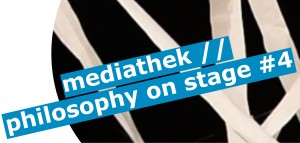Diana Marià Acevedo Zapata: Creative Movement, Creative Thought.
Performance by Diana María Acevedo Zapata [CV]
Abstract
When Zarathustra descends, when he goes down to meet human beings, he finds an old man that recognizes him. One of the first things the old man perceives is that Zarathustra is transformed, and at the same time looks like he “strides like a dancer” (TSZ 2). The kind of transformation Zarathustra experienced can be seen in his movements, it is related to the way he walks, the balance on his legs, the way the arms go with the rest of the body. Then, the old man asks Zarathustra why he comes down if that means he must drag his own body through the ground, “to climb ashore”. Having a body touching the ground means, for the old man, subjecting the spirit to a heavy existence, of not being free, in the platonic prison that is the body. In spite of this, Zarathustra replies: “I would only believe in a god who knew how to dance” (TSZ 29). So, what are the material conditions for dancing? It seems that dancing requires a body, weight and gravity. The kind of freedom that dancing gives, the experience of being freed from gravity, is something that can only be done through a body.
In this context I want to show two remarkable points in the Zarathustra: first, philosophy is a kind of practice that leads to a transformation of the philosopher, and second, its power of transformation is related, among other things, to the connection between the weight, the body and the ground. The Zarathustra presents this points through images that need to be performed in order to be understood, instead of through argumentative
explanation. The image of the dancer philosopher suggests that we need to experience movement if we want to philosophize. It invites us to think in movement, to perform and receive thinking through movement. The first image is the philosopher walking, and the second image is the three metamorphoses, which I interpreted to be
a progression towards becoming dancing philosophers. I will borrow some contact improvisation exercises to invite the audience to acquired an experiential and kinetic approach to the creative transformation of the philosopher in the Zarathustra.
Text Online
When Zarathustra comes back to human world, he finds an old man that recognizes him. One of the first things the old man perceives is that Zarathustra is transformed, and at the same time looks like he “strides like a dancer” (TSZ 2). The kind of transformation Zarathustra experienced can be seen in his movements, it is a transformation related to the way he walks >>>
PDF Download
download PDF here
 BACK TO MEDIATHEK MAINPAGE
BACK TO MEDIATHEK MAINPAGE
IMPRESSUM
Led by Arno Böhler, the PEEK-Projekt „Artist Philosophers. Philosophy AS Arts-Based-Research“ [AR275-G21] is funded by the Austrian Science Fund (FWF) as part of the programme for artistic development and investigation (PEEK). Research location: University of Applied Arts Vienna. Brought about in national and international cooperation with: Jens Badura (HdK Zürich), Laura Cull (University of Surrey), Susanne Valerie Granzer (Universität für Musik und darstellende Kunst Wien/Max Reinhardt Seminar), Walter Heun (Tanzquartier Wien), Alice Lagaay (Zeppelin Universität Friedrichshafen). Postdoc: Elisabeth Schäfer (University of Applied Arts Vienna). The lecture series was produced in collaboration with: Institut für Philosophie Universität Wien, University of Applied Arts Vienna [Arno Böhler] and Institut für Theater- Film- und Medienwissenschaft der Universität Wien [Krassimira Kruschkova].
Our mailing address is:
FWF PEEK-Project „Artist-Philosophers. Philosophy AS Arts-Based-Research“ [AR 275-G21]
Universität für angewandte Kunst
Oskar-Kokoschka-Platz 2
A-1010 Wien
Subscribe to our mailing list
Comments are closed.
